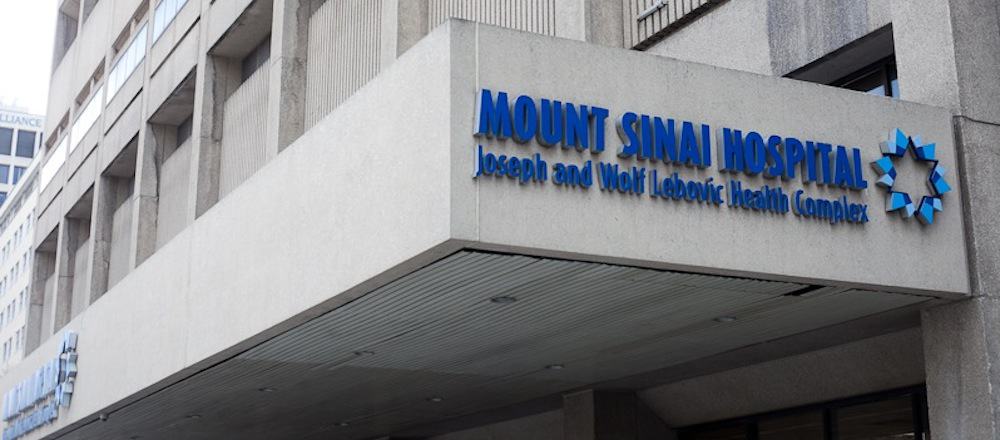On Saturdays, an elevator in Mount Sinai Hospital automatically rises and falls continually through the day, stopping on every floor, one after the other. It is designed to allow accessibility to people of the Jewish faith on the Sabbath — a holy day of rest on which the use of electricity is prohibited. Without the elevator, few of the hospital’s services would be easily accessible to those of the Jewish faith who keep the Sabbath.
The Sabbath Elevator is symbolic of how religion shapes public spaces in secular society. The narrative of religion in public medicine is complicated. It is a narrative of history, scientific research, and community growth. It can be a narrative of tolerance, or of discrimination. Ethics, public policy, and theology all offer different lenses from which to examine the issue.
According to professor Pamela Klassen, director of U of T’s multi-disciplinary Religion in the Public Sphere initiative,“[Religion in the Public Sphere] got started as an initiative to bring together the university, students [and] faculty, not only from the Department of Religion, but also the law school and other places where people are asking questions… what is the role of religion in public spaces? We are a secular society — what does that really mean? And how does religion play a role in those kinds of spaces of what some might call neutrality? Though nothing’s really neutral!” she says. “Religion in the Public Sphere is basically a place for people to think about those questions historically, anthropologically, sociologically, and legally, throughout all kinds of different disciplines and figure out… what is the status of religion in society?”
Holy history and modern medicine
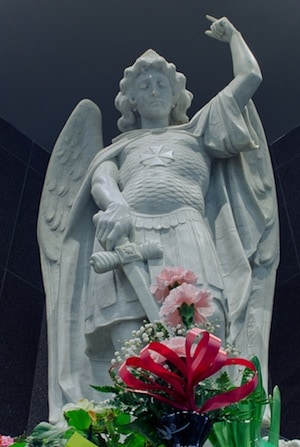
St. Michael’s Hospital. DENIS OSIPOV/THE VARSITY
Many medical institutions in Toronto can trace their histories back to religious communities. Three of the city’s current hospitals — St. Joseph’s Health Care Centre, Providence Hospital, and St Michael’s hospital — were founded by the Sisters of St. Joseph of Toronto. The sisters arrived in Toronto from Philadelphia in 1851, during an outbreak of typhus and cholera among Toronto’s Irish immigrant population. They founded the House of Providence to care for Torontonians who could not afford other health care.
After their work during that outbreak, the sisters were asked by the Medical Officer of Health for the City of Toronto to work in the Isolation Hospital (now Riverdale Hospital) during an epidemic of diphtheria and scarlet fever in 1891. The following year, the sisters founded St. Michael’s Hospital.
While Christian doctors in early Toronto easily found work, Jewish doctors faced discrimination from the established medical community, and were shut out from employment opportunities.
In August 1913, four women began knocking on doors, leading a nine-year fundraising campaign. Mrs. Cohn, Miller, Spiegel, and Adler raised $12,000 and, in 1923, the Toronto Jewish Maternity and Convalescent Hospital was founded in Yorkville. One year later, in 1924, its name was changed to Mount Sinai Hospital.
Teaching medicine was also a matter of faith. “If you look back at the nineteenth century, most of the medical schools were set up by the religious – by Christian organizations. Trinity College had a medical school, so did Victoria College — they all had their own medical schools before they federated with the University of Toronto,” says Klassen.
In the twenty-first century, religious congregations are generally no longer the primary founders of hospitals in North America, but religion continues to impact health-care.
“Largely, people argue that the process of medicalization — where medicine gains more and more power in our society — was also a process of secularization,” says Klassen, “I don’t totally buy that… I think secularisation is too much of a linear concept to think about what the role of religion is in various hospital settings today.”
The sisters of St. Joseph passed the administrative duties of their hospitals over to lay boards in the mid-1990s.
“They decided to get back to their grass roots,” says Joan Breech, chief administrative officer of the convent. “Going back over a hundred and sixty years ago, to basically to deal with the causes of poor health, to deal with the determinants of poor health… What do we do with people who are in poverty, have poor nutrition, and are isolated?”
The sisters run and participate in a number of programs in the city, including community kitchens and gardens, the In Good Company program, the Etobicoke program “Village Mosaic,” and the “Health Bus.”
The three hospitals that they founded are still linked by policy to the Christian faith. St. Michael’s H.ospital, for example, uses the Catholic Association of Canada Health Ethics Guide to guide some of its policies. Mount Sinai is not explicitly affiliated with the Jewish faith in its operating policies, but remains connected to Toronto’s Jewish community through community events and donations.
Motivated by faith
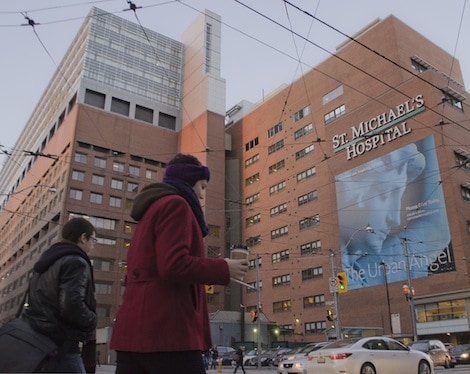
DENIS OSIPOV/THE VARSITY
Sister Margaret Myatt studied at the University of Toronto and graduated from the University of St. Michael’s College and the School of Hygiene. She worked as a hospital administrator for over 35 years. In Toronto, she was responsible for overseeing the merger of Our Lady of Mercy Hospital into St. Joseph’s Hospital to create St. Joseph’s Health Centre in 1980.
Myatt’s faith informed her decision to enter the medical field. “The poor are always with us,” she says. “I just felt called to be a part of that — to provide for those people who were most in need.”
The Sisters of St. Joseph build their work around six core faith values, which were passed down into the hospitals they founded: “Sanctity of Life, Human Dignity, Compassionate Service, Community, Social Justice and Social Responsibility,” lists Myatt. “My belief in that philosophy had to come out in my professional life as a hospital administrator… it focused it.”
During her education, Myatt chose to work at Mount Sinai hospital — in part to gain a new perspective on how faith is integrated into the field, expressing the importance of “respect for the diversity of faith.”
This diversity of faith can cause challenges for hospitals that are steeped in the Christian tradition. Faiths have different requirements and expectations, especially surrounding issues of birth and death.
In Canada, Islam is the fastest growing religious demographic. In 2007, the Muslim Medical Association of Canada was founded. It aimed to unite Muslim Canadians — both patients and students — in the medical field, to provide advocacy and services to a growing demographic in Canada and the medical field.
The MMAC founded the Welcome Medical Clinic in Mississauga — a free, volunteer-run clinic that only treats those without health insurance. The MMAC also aims to increase access to education and advocacy in the medical sphere. Its 2012 Pathways program provided high-school students in lower-income neighbourhoods the opportunity to speak with their local MP about refugee health care cuts.
Communication and accessibility
Dr. Raza M. Naqvi, the chair of MMAC, emphasises the importance of communication in building an equitable health care system: “The differences in culture between patient and physician often create communication gaps that can be difficult to address unless both sides are aware of the issue… As in most situations, we hope that more open and clear communication of the needs of all involved will help to address this.”
This need for communication is addressed in Canada’s Charter, which specifies the universal right to access without discrimination.
Religious needs are diverse and can include respecting food restrictions in hospital food, respecting a patient’s request to be examined by a female doctor, having a Sabbath elevator, or providing a place to pray. These particular needs are often referred to as patient accommodation needs.
According to Marylin Kanee, director of diversity and human rights at Mount Sinai, “When we haven’t addressed everything possible around access and equity, there becomes a need for accommodation… [Y]ou can’t always anticipate every situation, our world changes a lot constantly, and even with the best intent, you miss stuff. So that’s when people come forward, and we need to give individual accommodation.”
Often the greatest challenge for hospital staff is not the process of providing accommodation, but communication between staff members.
“We’re in a really, amazingly complex place… it is entirely possible that within two days, a patient may have contact with 40 people who work here,” says Kanee. Patient information — including any religious needs — has to be communicated to every member of the staff, and there is not always an accessible repository for this information.
The problem with accommodation is that it happens on a case-by-case basis, and can be easily forgotten in the hectic day-to-day operations of the hospital. Policy and official documentation become powerful tools, policy changes outlast and overpower institutional memory, and documents can become the foundation of a shift in practises — a shift from working in the sphere of accommodation to working in the sphere of equity.
Kanee describes one of her most recent initiatives — documenting the official safety procedures around smudging.
“I could not find it in a policy anywhere,” she says. “We had done it, we had decided as a group, we worked with the fire marshall to ensure that we could do smudging in the hospital, but that’s not written down anywhere. So if [the current staff] disappears, we don’t know about it. So that’s why policy is important… So that anyone can find it, so that nobody can say ‘We don’t have a policy on smudging, so you can’t do it.’”
Caring for the spirit
Access to religion in hospitals is more than avoiding a lawsuit. Academic studies show that people with access to religion often heal faster and more completely. Respecting religion positively impacts mental health, which in turn impacts recovery times. Disrespecting a patient’s religious needs can cause great distress, negatively impacting their health. Faith communities can also act as support networks.
In Toronto’s hospitals, access and respect for religion are a matter of ensuring complete care for a person. According to Joanne Davies, the Ecumenical Chaplain at Mount Sinai and Chaplain at St. John’s Rehab, “Spirituality is what grounds you. And often that comes from something other than what the religious institution and dogmas and doctrines provide. It comes from somewhere else entirely. And it’s cliché, but it’s true — it can be something as simple as being outside.”
Though spirituality encompasses religion, Davies stresses that hospitals should still aim to consider religion as a factor in patient care. “Sometimes a person’s own spirituality is affected deeply by their religion, and not always in a healthy way. So you do need to know,” she says, citing the example of LGBTQ patients who experience exclusion in some religious communities.
On the hospital floor, the chaplains act as spiritual nurses more than they act in an explicitly religious context. Davies’s day-to-day work is often exploratory: “It’s basically walking the floor and visiting people… and having them go, ‘What do I do with a chaplain?,’ and usually, quite often, that’s the first place,” she says.
If a patient is isolated from what gives them greatest spiritual fulfillment in the course of their treatment, “I attempt to find a way that they can cope with missing that,” she says, “And find what else in their life that they have, that they can also use to cope, what else informs their spirituality. Because, as always, when you are isolated away from the thing that gives you the greater joy, you totally forget any of the smaller pieces.”
Davies’s role is as a counsellor — “I can’t give a needle or medicine, but I can listen” — and as a communicator. She helps patients conceptualize and articulate their spiritual needs, and offers validation and support for those who need different care because of their religious identity.
“And if someone has that religious belief that I don’t, or because medicine believes one thing and religion believes another, neither are wrong,” she says, “so that’s where it’s a real communication — as a chaplain, that’s where I would help a patient articulate. ‘I can’t have that, I can’t be part of that, and this is the reason’ so that each side can hear, and everyone gets the best care that is possible.”
Striving for equity
When asked if accessibility and equity concepts affect the physical structure of hospitals — if concerns about equity shape the design of spaces, or the location and amount of space given to certain services — Kanee pauses.
“It should,” she says, “how hospital buildings are built — it’s a lot to do with the bottom line. Every inch is specified through a ministry. What is this inch for? How many of these inches do we need for this or for that?”
Further challenges are posed by the fact that many different needs must be considered when building spaces or designing policies in the hospital. Even within the sub-category of religious accessibility, religions may have practises that contradict.

The Spiritual Oasis at Mount Sinai Hospital. ALICE XUE/THE VARSITY
The creation of the spiritual oasis of Mount Sinai, for example, was done by a committee.
“We actually pulled together staff who were interested in designing that space from a wide range of religious groups, including atheists, so we had everybody at the table,” says Kanee. “We worked together to figure out what we needed in that space, but also how we could build a space that wouldn’t be accommodating to the needs of one religion, and offend others.”
The room has prayer mats and kneelers, and a small table that can serve as an altar, and is attached to a wudu room. Each element was carefully considered before its inclusion; for example, no artifact could dominate the room.
“So it’s very plain,” Kanee explains, “but everything you need is in there, you just need to access it and pull it out.”
Like U of T’s Religion in the Public Sphere initiative, the hospitals work to research the needs of their patients.
Established by the Ontario government in March 2006, Local Health Integration Networks (LHINs) are not-for-profit groups that work with the local health services to spearhead research and work into health service priorities of their geographic region.
The Toronto Central LHIN — which includes Mount Sinai and St Michael’s Hospital — recently completed a pilot project that collected patient demographic data in order to examine both demographics and the best way to collect that demographic information from patients. Titled “We Ask Because We Care,” the study reported a patient participation rate of over 85 per cent — an overwhelming success.
The study has already effected policy change: the Toronto Central LIHN has directed its hospitals to begin collecting socioeconomic data as a first step in analyzing patient demographics and needs, in an effort to identify areas of need.
Diversity of approaches
While hospitals may welcome patients of all faiths, it is harder to write a policy that can solve the problem of the desire to have a place that you belong to — a space to which your community can lay some measure of claim, and that in turn can rely on the community for support.
“The other side to the role of religion in hospitals is this philanthropic side, so that communities feel attached to hospitals and, increasingly, the hospitals depend on this philanthropic funding,” says Klassen. She cites the Brampton Civic Hospital, as an example where the Sikh community raised over $2.5 million for the institution.
“A community [thought] that its needs were not being met, and they wanted to bring religion into the secular setting in various ways,” says Klassen. Currently, the name of the Guru Nunak Emergency Services Department acknowledges the role of the Sikh community in the hospital.
In other cases, established services do not seem capable of addressing specific concerns of new communities. Religious communities then turn inwards, creating new services to address these needs.
Naseeha, from the Arabic word for advice, is a helpline created in the GTA in 2006 directed towards Muslim youth. It provides anonymous peer-to-peer counseling, services similar to those of Kids Help Phone, but with an informed consideration of its callers’ religious backgrounds.
“The idea originated from the awareness that many youth feel they have no one to turn to for help with their problems,” says Yaseen Poonah, executive director of Naseeha. “There is a gap in our communities between Muslim youth raised in Canada and the US, and those that moved to Canada and the US from different parts of the world. This generational gap can sometimes pose a problem for young people seeking to be understood. They have challenges and questions that only their peers can relate to,” he adds.
The phone line allows callers to be defined as they chose, with their faith as merely one facet of their identity. “Muslims come in all shapes and sizes; Muslims are not a homogeneous group, and there is no cookie-cutter solution,” says Poonah. “We simply provide a safe and inclusive avenue for youth to discuss what’s on their mind.”
In the context of “one of the most ethnically diverse — and one of the most religiously diverse — places in the world,” Klassen notes, adding, “the relationship between the religious and the secular just keeps changing.”
Religious communities and ideals occupy a unique space in Toronto’s medical community. There is tension in this space — between the old and the new, theory and practise, and resources and need. It is a space beyond accommodation — changing, growing, and transforming a secular society.
“How does your religion impact your health?”
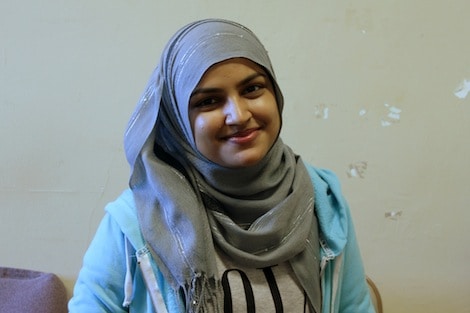
Aruba | Second year, health studies
“My faith grounds me… Spiritual health is just as important as physical health. When the two have a point of confluence like prayer, that makes everything amazing.”
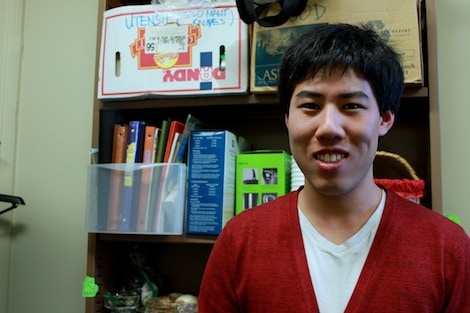
Simeon | Third year, engineering science
“My religion, as a Christian, means that my identity and my perception of selfworth is not based purely on my academic performance or future career path. Although it doesn’t mean I don’t need to try my best… it takes a lot of stress off school. ”

Melanie | Fourth year, health and disease
“It does impact my mental health!… Hinduism [teaches me that] to be real is to understand self-realisation… I think it really affects my positive energy!”
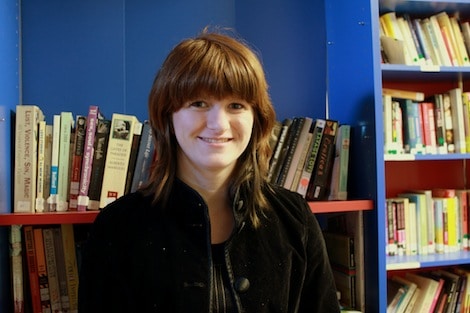
Ola | Second year, psychology
“I’m not religious in the traditional sense…but it’s important for me to live my life helping people. That affects my health pretty powerfully.”

Shafquat | Third year, engineering and math
“My religion teaches me patience, and without it, I would probably be dying because I go to U of T.”
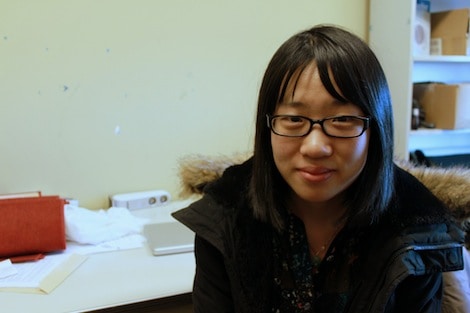
Grace | Second year, pharmacology
“I’ve never thought about that question before..I’m not really religious.”

